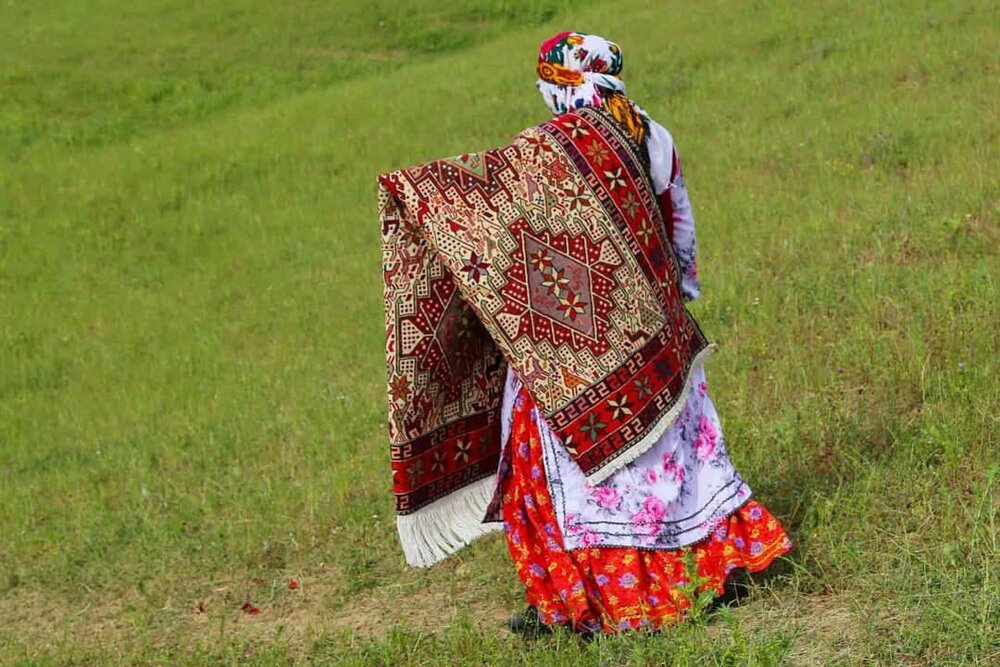Verni-bafi: Tabriz festival seeks to prompte handicraft export

TEHRAN—A national handicrafts festival dedicated to the traditional field of Verni-bafi is scheduled to be held in Tabriz, East Azarbaijan province, in late October, the provincial tourism chief has said.
The festival seeks to introduce and export Verni-bafi products to other countries such as Turkey, Ahmad Hamzehzadeh explained on Saturday.
This could lead to the economic prosperity of the city and province’s handicraft sector, the official added.
Verni shares the features of both kilim and rugs. It is woven without any prepared pattern by the nomadic women and villagers of the region. That’s why most patterns and colors of it reflect the nomadic culture.
The weft of Verni is made of cotton, wool, and silk threads. It is woven both on horizontal and vertical looms and is used in tents and houses of villagers and nomads.
Traditions and beliefs of the region are represented in Verni’s patterns. Animals and birds are depicted in Verni's weavings through imaginative designs and images.
Soaked in history and culture for millennia, Tabriz embraces several historical and religious sites, including the Jameh Mosque of Tabriz and Arg of Tabriz, and UNESCO-registered Tabriz Historic Bazaar Complex, to name a few. The city became the capital of the Mongol Il-Khan Mahmud Gazan (1295–1304) and his successor. Timur (Tamerlane), a Turkic conqueror, took it in 1392. Some decades later, the Kara Koyunlu Turkmen made it their capital. It was when the famous Blue Mosque was built in Tabriz.
The city retained its administrative status under the Safavid dynasty until 1548, when Shah Tahmasp I relocated his capital westward to Qazvin. During the next two centuries, Tabriz changed hands several times between Persia and the Ottoman Empire. During World War I, the city was temporarily occupied by Turkish and then Soviet troops.
The ancient city was declared a world craft city of carpet weaving by the World Craft in 2016. It also bore the title of 2018 Islamic Tourism Capital.
With 14 entries, Iran globally ranks first for the number of cities and villages registered by the World Crafts Council, as China with seven entries, Chile with four, and India with three ones come next.
Available data compiled by the Ministry of Cultural Heritage, Tourism, and Handicrafts suggests the value of Iran’s handicrafts exports stood at $120 million during the first eleven months of the Iranian calendar year 1399 (March 20, 2020–February 18, 2021), Mehr reported. The country’s handicrafts exports slumped during the mentioned months in comparison to the same period last a year earlier due to the damage the coronavirus pandemic has inflicted on global trade.
The Islamic Republic exported $427 million worth of handicrafts during the first eleven months of the calendar year, 1398 (started March 2019). Of the figure, some $190 million was earned via suitcase trade (allowed for customs-free and tax-free transfer) through 20 provinces, according to data compiled by the Ministry of Cultural Heritage, Tourism and Handicrafts. Ceramics, pottery vessels, handwoven cloths as well as personal ornamentations with precious and semi-precious gemstones are traditionally exported to Iraq, Afghanistan, Germany, the U.S., the UK, and other countries.
ABU/AM
Leave a Comment